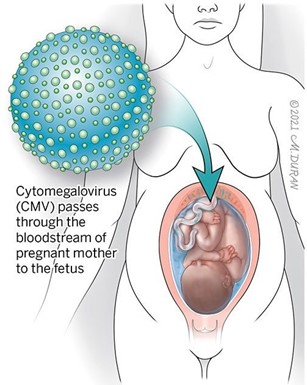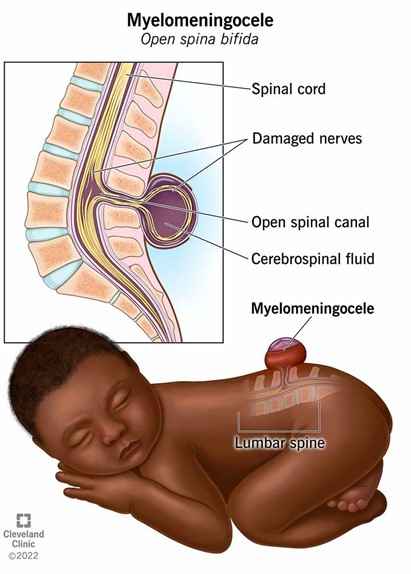A nurse is caring for a newborn immediately following birth and notes a large amount of mucus in the newborn's mouth and nose. Identify the sequence the nurse should follow when performing suction with a bulb syringe.
(Arrange the steps, placing them in the selected order of performance. Use all the steps.)
Compress the bulb syringe.
Place the bulb syringe in the newborn's mouth.
Assess the newborn for reflex bradycardia.
Use the bulb syringe to suction the newborns nose.
The Correct Answer is A, B, D, C
- Compressing the bulb syringe before placing it in the newborn's mouth or nose creates a vacuum that allows the suctioning of the mucus¹².
- Placing the bulb syringe in the newborn's mouth first helps clear the oral airway and prevent aspiration of mucus into the lungs¹². The nozzle of the bulb syringe should be gently inserted into the corner of the mouth, not the center, to avoid stimulating the gag reflex¹².
- Using the bulb syringe to suction the newborns nose helps clear the nasal airway and improve breathing¹². The nozzle of the bulb syringe should be gently inserted into one nostril at a time, and not too far, to avoid injuring the nasal mucosa¹².
- Assessing the newborn for reflex bradycardia helps monitor for any adverse effects of suctioning, such as a decrease in heart rate due to vagal stimulation¹³. Reflex bradycardia can cause hypoxia and acidosis in newborns, and may require oxygen administration or resuscitation³. The normal heart rate for a newborn is 120 to 160 beats per minute³.

Nursing Test Bank
Naxlex Comprehensive Predictor Exams
Related Questions
Correct Answer is D
Explanation
This is the only option that is true and relevant to maternal cytomegalovirus infection. CMV can be transmitted from the newborn to the mother or other caregivers through contact with the saliva and urine of the newborn, which may contain high amounts of the virus. Therefore, it is important to practice good hygiene and avoid contact with these body fluids when caring for a newborn with congenital CMV.
a) This infection does not require that airborne precautions be initiated for the newborn. Airborne precautions are used to prevent the spread of infections that are transmitted by small droplets that can remain suspended in the air and travel over long distances, such as tuberculosis, measles, or chickenpox. CMV is not transmitted by airborne route, and standard precautions are sufficient to prevent exposure to blood or body fluids that may contain CMV
b) Mothers will not receive prophylactic treatment with acyclovir prior to delivery. Acyclovir is an antiviral medication that is used to treat herpes simplex virus (HSV) infections, such as cold sores, genital herpes, or neonatal herpes. It has no effect on CMV infection, and it is not recommended for pregnant women or newborns with CMV.
c) Lesions are not visible on the mother's genitals. Lesions are a sign of HSV infection, not CMV infection. HSV can cause painful blisters or ulcers on the mouth or genitals, and it can be transmitted to the newborn during delivery. CMV does not cause any visible symptoms on the mother's genitals, and it can be transmitted to the newborn during pregnancy, delivery, or breastfeeding.

Correct Answer is B
Explanation
A. Using povidone-iodine on the site of a myelomeningocele is not recommended as it can be irritating to the tissue and might not be safe for use on open neural tissue. The focus should be on preventing infection through other means.
B. Administering broad-spectrum antibiotics is crucial as the cerebrospinal fluid (CSF) leak increases the risk of infection, such as meningitis. Antibiotics help protect the newborn from potentially serious infections until surgical repair can be performed.
C. Surgical closure of a myelomeningocele is typically done as soon as possible, often within 24-48 hours after birth, to minimize the risk of infection and further damage to the exposed spinal cord.
D. While monitoring temperature is important, rectal temperature measurement is not recommended for a newborn with a myelomeningocele due to the risk of causing further complications. Axillary temperature measurement would be safer and less invasive.

Whether you are a student looking to ace your exams or a practicing nurse seeking to enhance your expertise , our nursing education contents will empower you with the confidence and competence to make a difference in the lives of patients and become a respected leader in the healthcare field.
Visit Naxlex, invest in your future and unlock endless possibilities with our unparalleled nursing education contents today
Report Wrong Answer on the Current Question
Do you disagree with the answer? If yes, what is your expected answer? Explain.
Kindly be descriptive with the issue you are facing.
